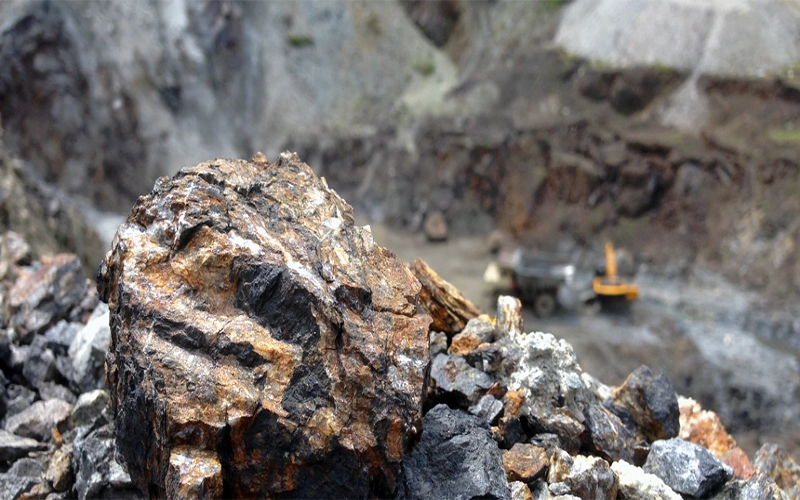Manganese ore is a vital natural resource composed primarily of the mineral manganese, which is a hard, brittle, silvery-grey metal. It is primarily used in the production of steel and other industrial alloys due to its properties that enhance strength, hardness, and resistance to wear. Manganese is not found in its pure form in nature but is extracted from a variety of ores, the most common being pyrolusite (MnO₂), along with others like rhodochrosite (MnCO₃) and manganite (MnO(OH)).
Manganese ore is typically found in sedimentary deposits, formed through chemical processes in shallow marine environments. It can also occur in lateritic soils and hydrothermal veins. The largest producers of manganese ore include countries like South Africa, Australia, Brazil, and India. South Africa, in particular, has some of the richest manganese deposits in the world, especially in the Kalahari Basin.
The primary use of manganese ore is in the steel industry, where about 90% of mined manganese is used. It acts as a deoxidizing and desulfurizing agent during the steelmaking process and helps in forming strong and durable steel alloys. Manganese is also used in the production of aluminum alloys, dry cell batteries, pigments, fertilizers, and as a component in some ceramics and glass products.
Beyond its industrial uses, manganese is also essential for life. It plays a crucial role in biological processes as an enzyme cofactor involved in metabolism, bone development, and antioxidant defense in both plants and animals. However, while small amounts of manganese are necessary for health, excessive exposure, especially through inhalation in industrial settings, can be toxic and lead to a condition known as manganism, a neurological disorder with symptoms similar to Parkinson’s disease.
Processing manganese ore involves crushing, grinding, and various beneficiation techniques to improve ore quality and remove impurities. The final product is often used directly in steel production or further refined into manganese alloys such as ferromanganese and silicomanganese.

Environmentally, manganese mining can result in deforestation, soil erosion, and water pollution if not properly managed. However, sustainable practices and environmental regulations are increasingly being enforced to reduce the impact.
Overall, manganese ore is a critical mineral with extensive industrial applications and strategic importance for modern economies, particularly in the manufacturing and metallurgical sectors. Its role in steel production makes it indispensable for infrastructure, construction, and transportation industries worldwide.
Manganese is essential to iron and steel production by its sulfur-fixing, deoxidizing, and alloying properties. Steelmaking, including its iron-making component, has accounted for most manganese demand, presently in the range of 85% to 90% of the total demand. Among a variety of other uses, manganese is a key component of low-cost stainless steel formulations.
Small amounts of manganese improve the workability of steel at high temperatures because it forms a high-melting sulfide and therefore prevents the formation of a liquid iron sulfide at the grain boundaries. If the manganese content reaches 4%, the embrittlement of the steel becomes a dominant feature.

| Element | Mn | SiO2 | Al2O3 | P | S | MgO | Mn/Fe | Size | Origin |
|---|---|---|---|---|---|---|---|---|---|
| Percent | 42% base, < 40% rejected | 10% max | 5% max | Trace | Trace | 1% | 5.8:1 | 10-300 mm | Mozambique |

© 2013 Vertix Co. All Rights Reserved. Leading Supplier Of Foundry & Metallurgical Materials